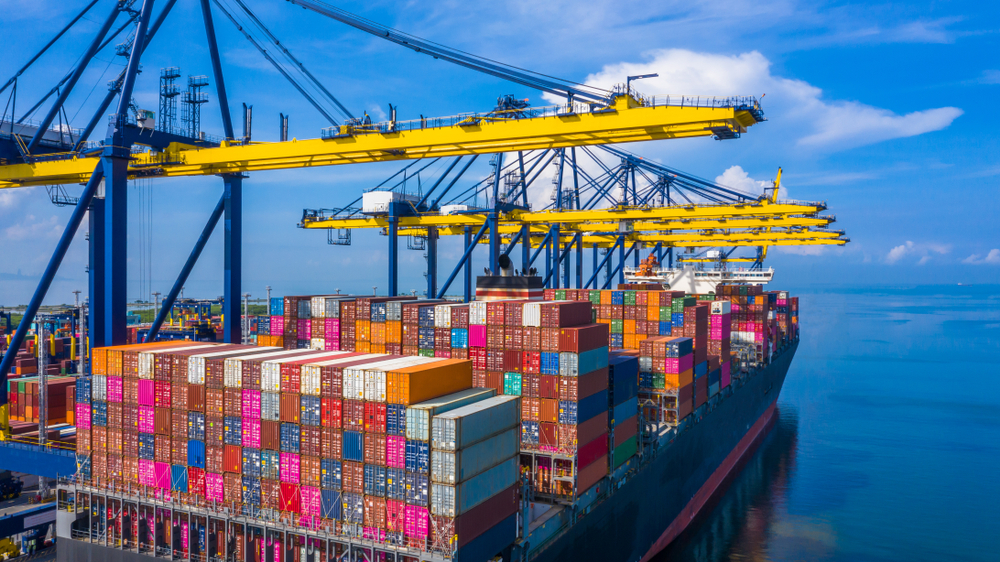Managing global trade complexities with Incoterms
Incoterms, short for International Commercial Terms, are a standardized set of international trade rules established by the International Chamber of Commerce (ICC). These terms define the responsibilities and obligations of buyers and sellers in the global sale of goods, outlining specific points in the shipping process where risk and costs transfer between the parties.
Incoterms help facilitate smooth international transactions by providing a common language and framework, reducing uncertainties and potential disputes related to shipping, insurance, and other logistical aspects of trade.

Image Credit: Shutterstock
In the complex world of global trade, it’s crucial for buyers and sellers to be able to communicate clearly and agree on the terms of their trade. The International Chamber of Commerce (ICC) has been a key player in ensuring this through Incoterms, which are basically international trade rules. Created in 1936 and updated from time to time, these rules provide a common language for businesses involved in cross-border transactions. They help prevent confusion and disagreements. Incoterms are not just importance as tools that not only make transactions smoother but also key contributors to open markets and economic well-being through international trade.
There are a set of 11 internationally recognized rules under Incoterms that define the responsibilities of sellers and buyers. These essentially demarcate who is responsible for paying/managing the shipment, insurance, documentation, customs clearance, and other logistical activities.
Incoterms Rules for Any Mode of Transport
Incoterms, or International Commercial Terms, are a set of standardized international trade terms used in contracts for the sale of goods. They define the responsibilities of buyers and sellers regarding the delivery of goods, transfer of risk, and payment arrangements. When it comes to any mode of transport, several Incoterms rules are applicable.
- EXW – Ex Works: The seller makes the goods available at their premises. The buyer bears all costs and risks associated with transporting the goods from the seller’s premises to the final destination.
- FCA – Free Carrier: The seller delivers the goods to a named carrier or another person nominated by the buyer at the seller’s location. The risk transfers to the buyer once the goods are delivered to the carrier at the named place.
- CPT – Carriage Paid To: The seller delivers the goods to a carrier or another person nominated by the seller at an agreed-upon place (usually a destination port). The risk transfers to the buyer when the goods are handed over to the carrier.
- CIP – Carriage and Insurance Paid To: Similar to CPT, but the seller is also responsible for obtaining insurance against the buyer’s risk of loss or damage during transportation.
- DAP – Delivered at Place: The seller is responsible for delivering the goods to a pre-determined place, ready for unloading by the buyer. The risk transfers to the buyer upon delivery.
- DPU – Delivered at Place Unloaded: This term is new in Incoterms 2020, replacing DAT (Delivered at Terminal). The seller is responsible for delivering the goods, unloaded, at a named place. The risk transfers to the buyer upon delivery.
- DDP – Delivered Duty Paid: The seller is responsible for delivering the goods to the buyer’s premises, including all costs and duties. The buyer only has to unload the goods and is responsible for import customs clearance.
Incoterms Rules for Sea and Inland Waterway Transport
- FAS (Free Alongside Ship): The seller delivers the goods alongside the vessel at the named port of shipment. The buyer is responsible for all costs and risks from that point onward.
- FOB (Free On Board): The seller is responsible for delivering the goods on board the vessel named by the buyer at the named port of shipment. Risk and responsibility transfer to the buyer once the goods are on board the ship.
- CFR (Cost and Freight): The seller is responsible for delivering the goods on board the vessel at the named port of destination. The seller covers the cost of freight to the named destination port. Risk transfers to the buyer once the goods are on board.
- CIF (Cost, Insurance, and Freight): Similar to CFR, but the seller also has to obtain insurance against the buyer’s risk of loss or damage to the goods during transportation. The seller is responsible for the cost of freight and insurance.
It’s important to note that these Incoterms specifically apply to sea and inland waterway transport. They define the point at which risk and responsibility transfer from the seller to the buyer. Additionally, the choice of the appropriate Incoterm depends on various factors, including the nature of the goods, the mode of transport, and the preferences of the buyer and seller.
What Incoterms Do Not Cover
It is important to note, however, that Incoterms do not cover the following:
- Conditions of a Sale: Incoterms do not address all conditions of a sale.
- Goods Identification and Price: They don’t identify the goods being sold or list the contract price.
- Payment Terms: They don’t specify the method or timing of payment negotiated between parties.
- Title Transfer: They don’t determine when the title of goods passes from seller to buyer.
- Document Requirements: They don’t specify required documents for customs clearance.
- Liabilities: They don’t address liability for delayed delivery or dispute resolution mechanisms.
Incoterms were updated in 2020, with only one term changing from Delivered at Terminal (DAT) to Delivered at Place Unloaded (DPU). Other than naming conventions, several other nuanced changes were introduced. For example, the amount of freight insurance required under the CIP term was increased, though this did not impact the CIF term.
The revision also addressed situations where either the buyer or seller transports goods using their own vehicles, a scenario that was not explicitly covered in the 2010 version. Other notable updates included changes in the FCA rule’s usage in conjunction with a letter of credit and alterations in security-related cost responsibilities were notable updates. Incoterms 2010 still can Be Used, it is acceptable to use Incoterms 2010 after January 1, 2020, but both parties must agree in writing on the version to be used.
Incoterms offer a standardized approach to international trade. They are recognized globally and updated by an international body (ICC). They provide clarity, reducing ambiguity and the need for extensive legal intervention. Differences in preferences between buyers and sellers can lead to negotiation challenges. Certain terms may expose one party to inflated costs, requiring careful consideration and understanding of these terms during negotiations.
Conclusion
Incoterms serve as invaluable tools for facilitating international trade by providing a universal set of rules and guidelines. They act as a common language, enabling traders to set the terms of their agreements with clarity and precision. However, it is crucial to recognize the limitations of Incoterms, as they do not cover all aspects of a sale, such as identifying the goods being sold, contract prices, payment methods, the transfer of title, and specific documents required for customs clearance.
While Incoterms offer a standardized framework, parties involved in any contract should ensure that these essential elements are addressed outside of the Incoterms to guarantee a smooth and legally sound business transaction. As the world of commerce continues to evolve, Incoterms remain an essential cornerstone in fostering global economic prosperity through open markets and transparent trade practices.













Leave a comment